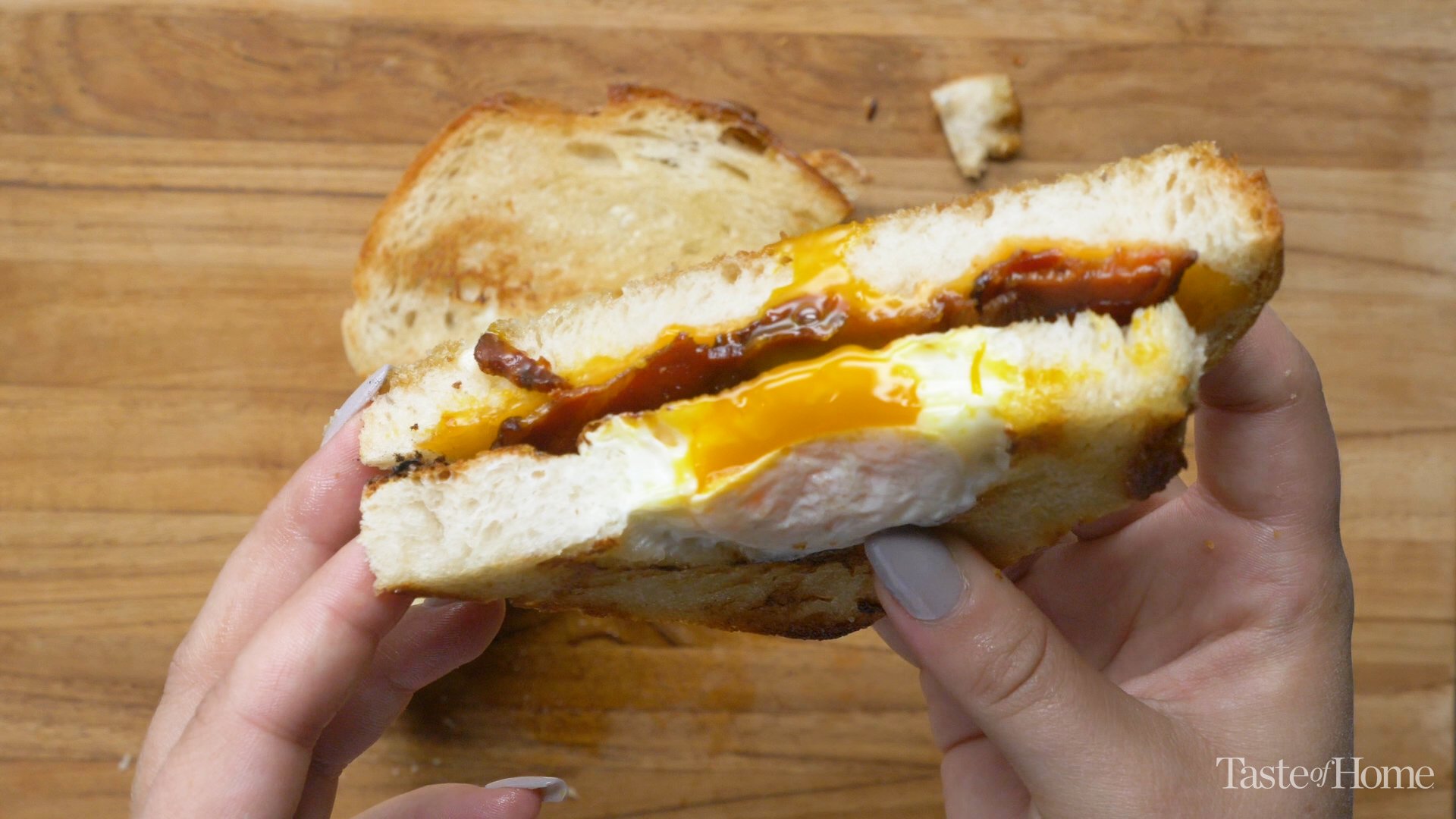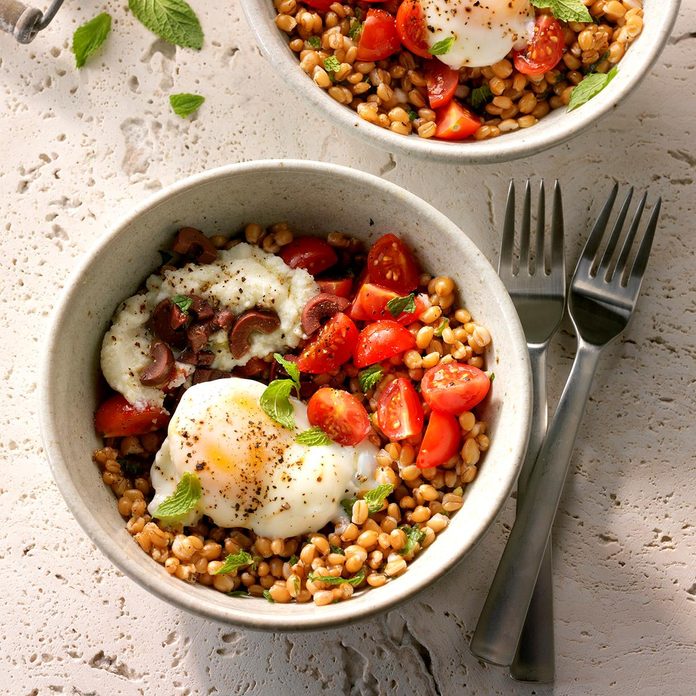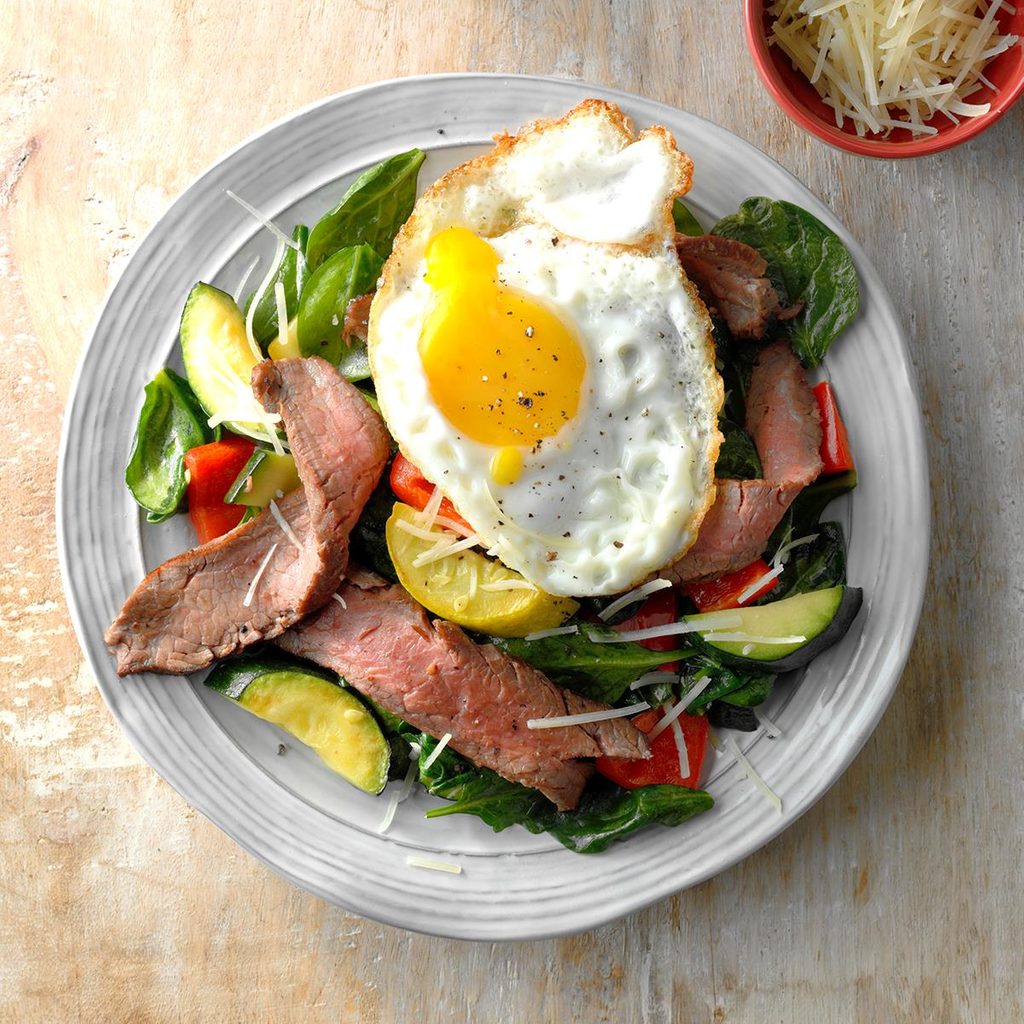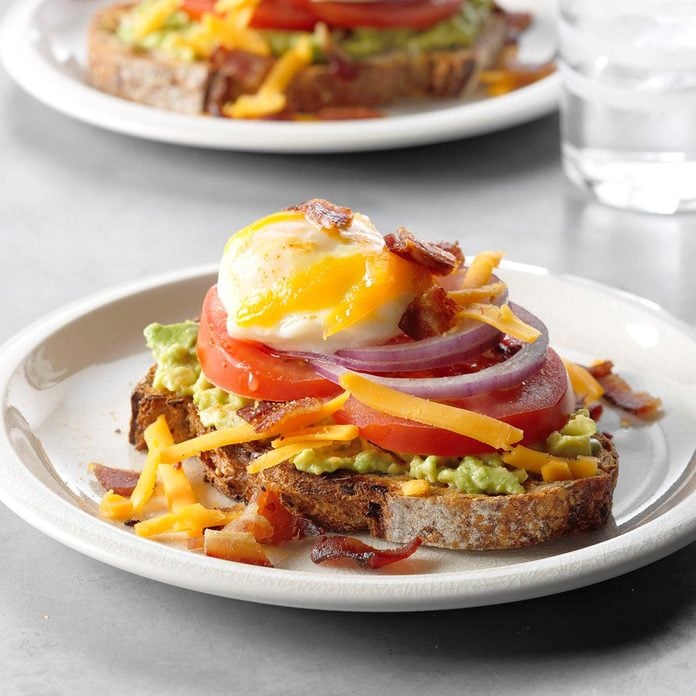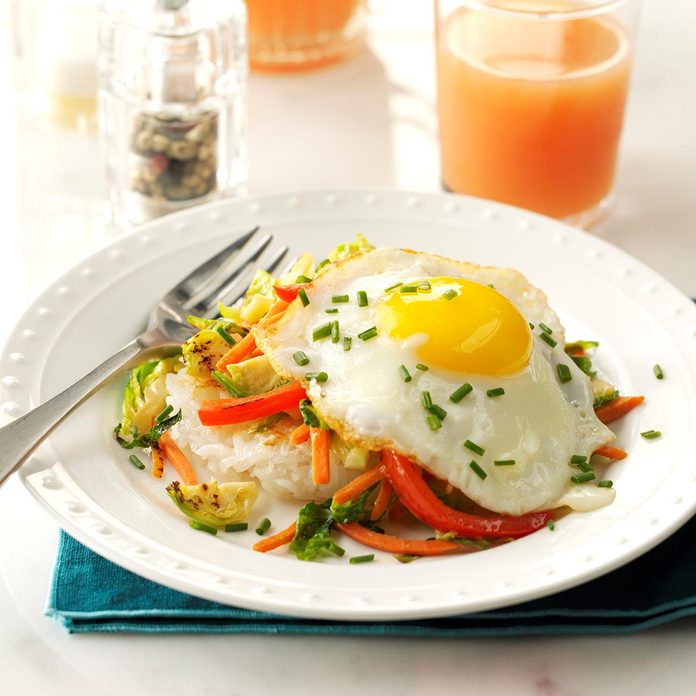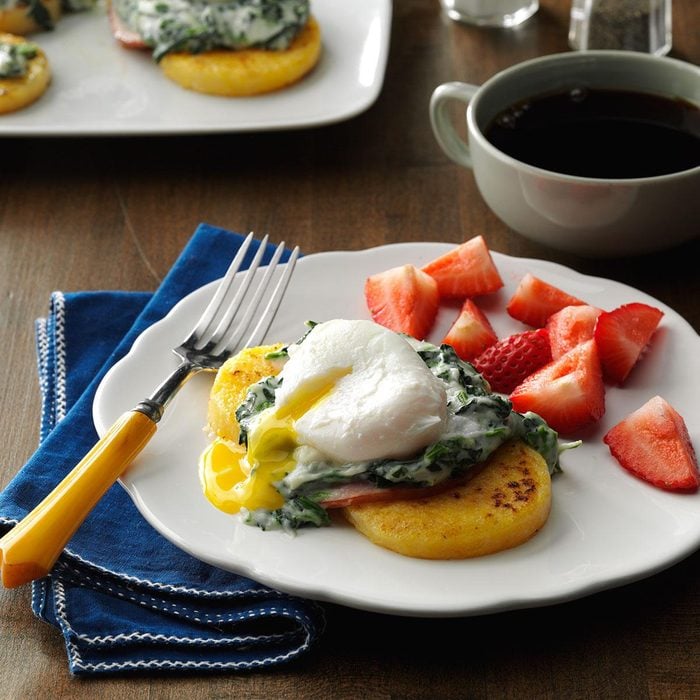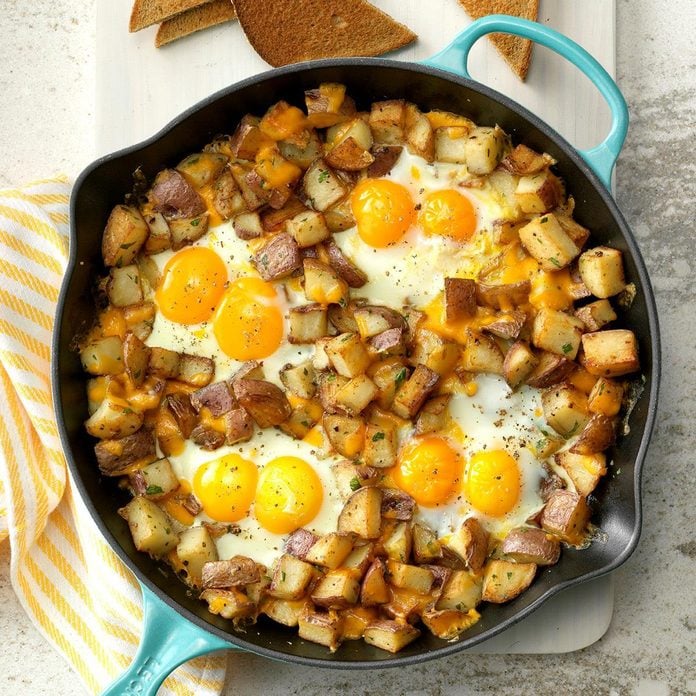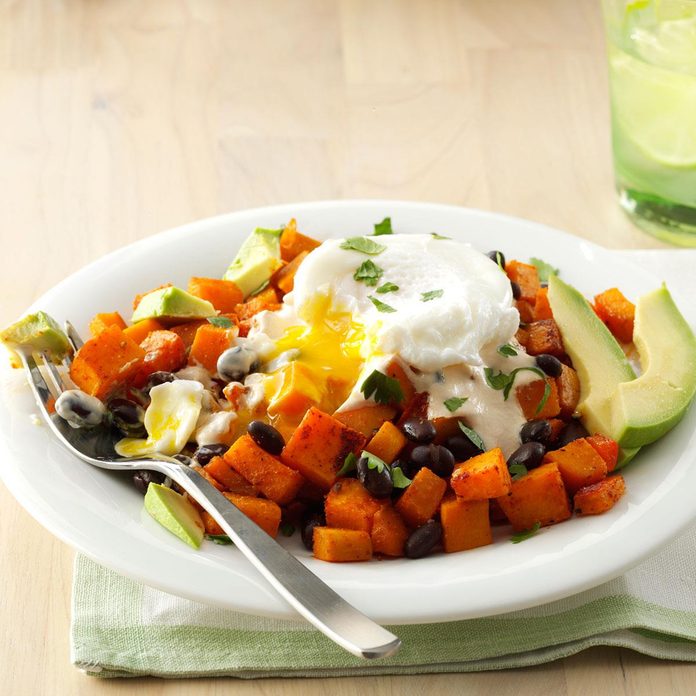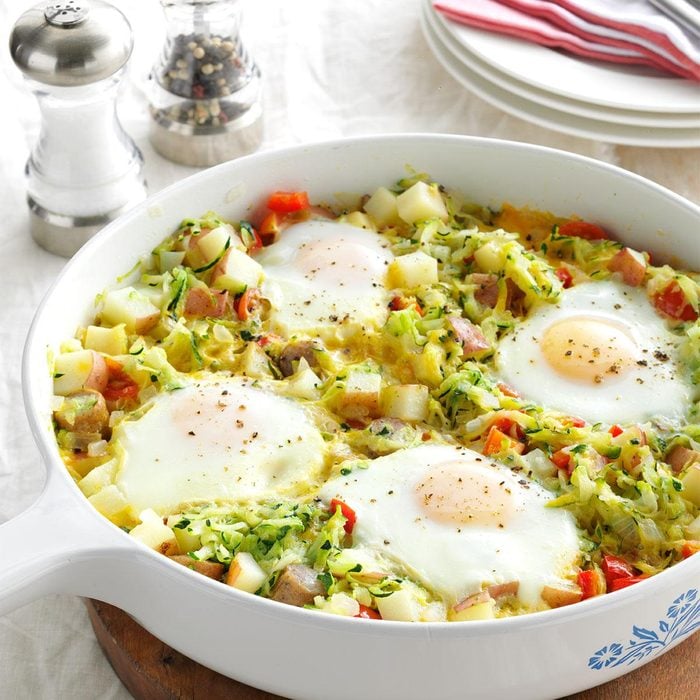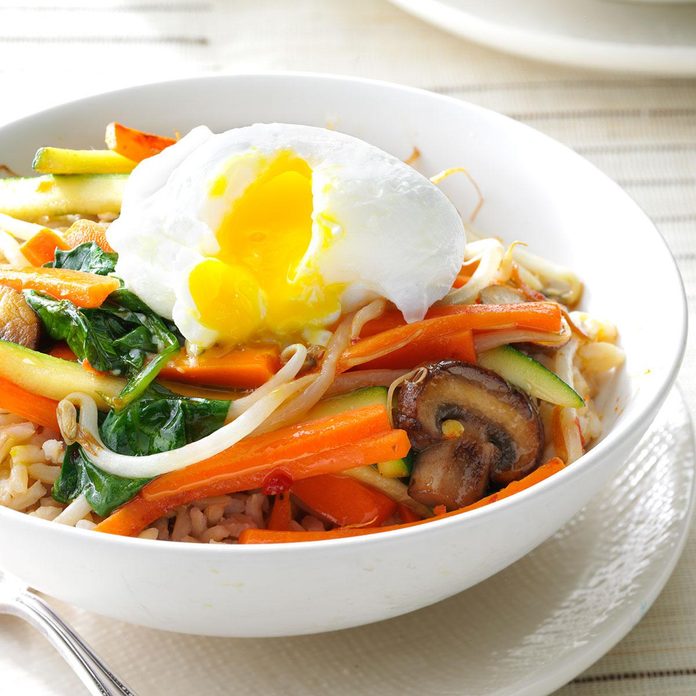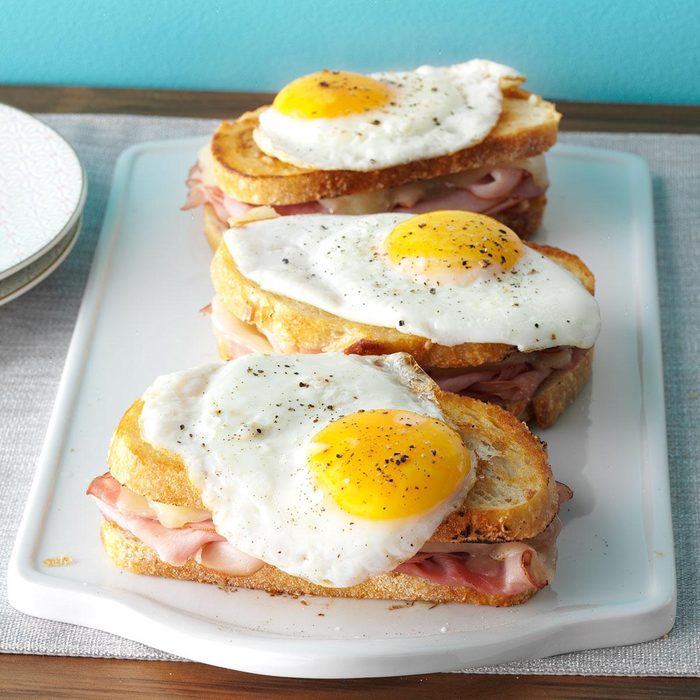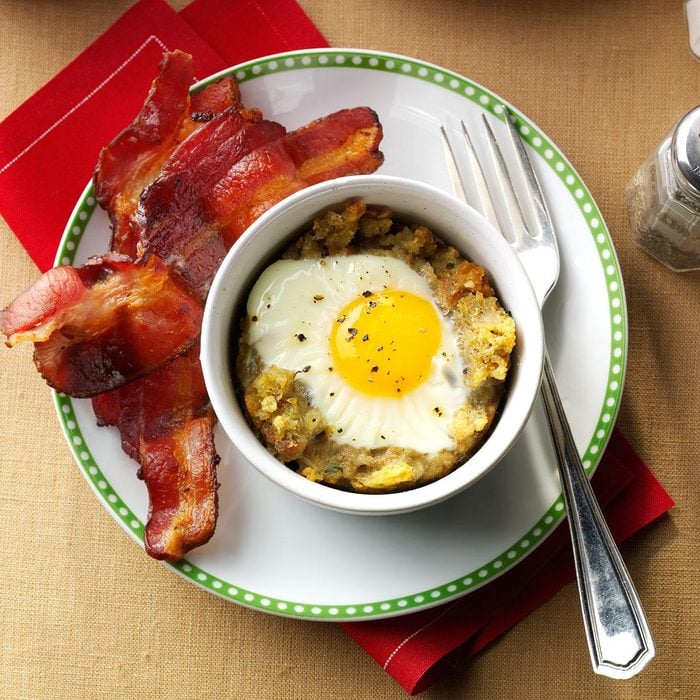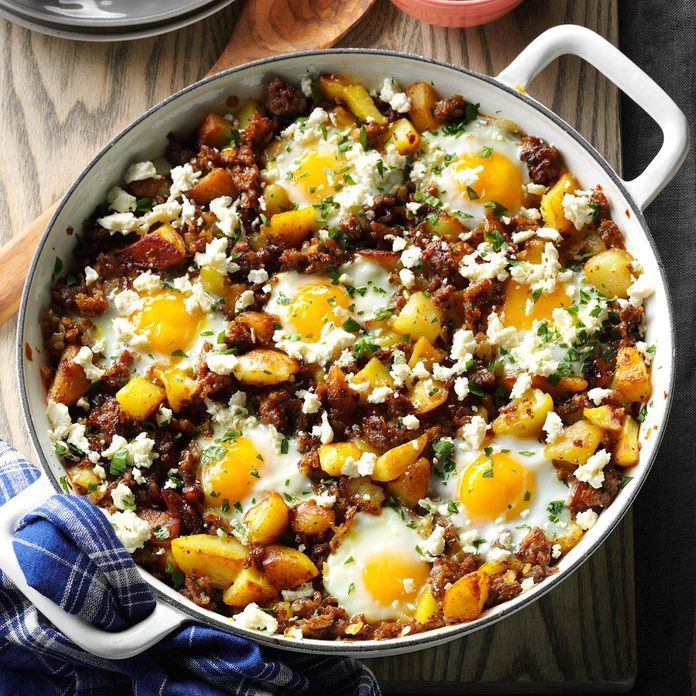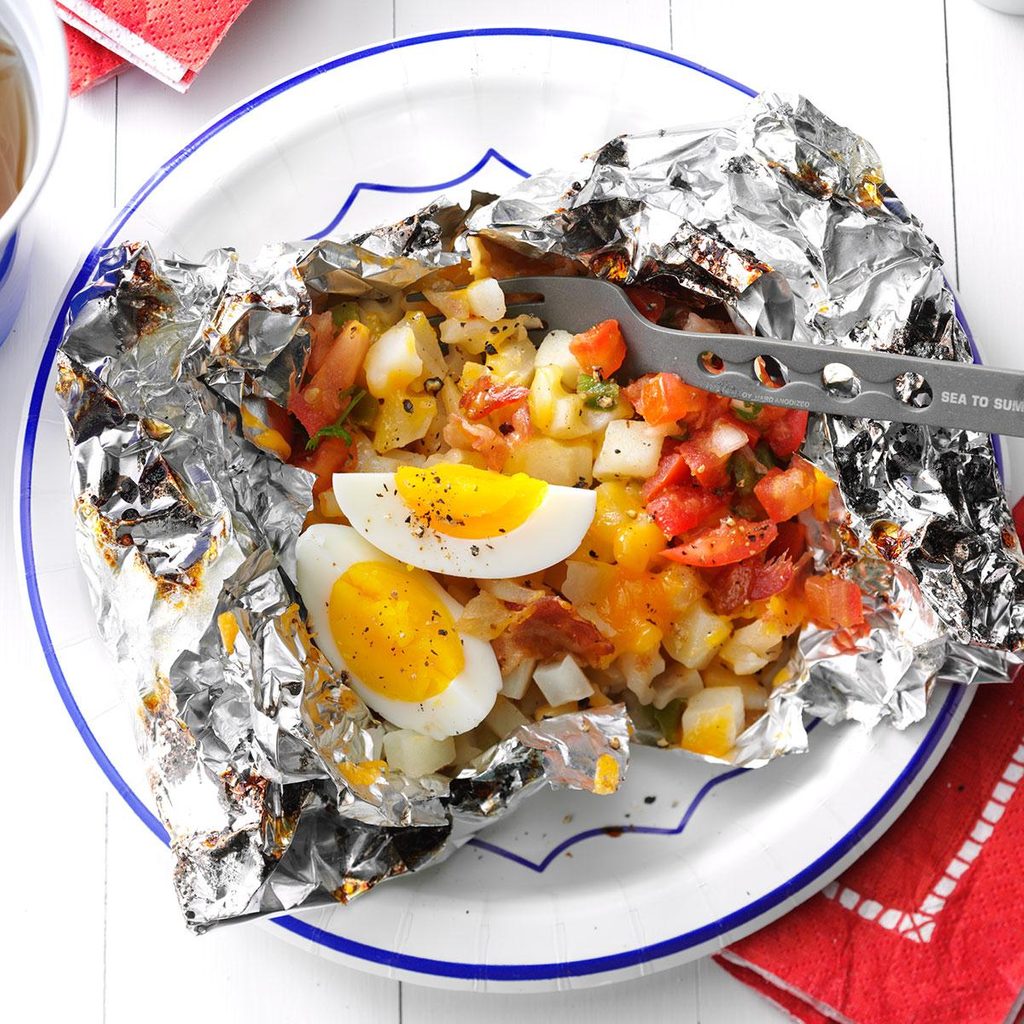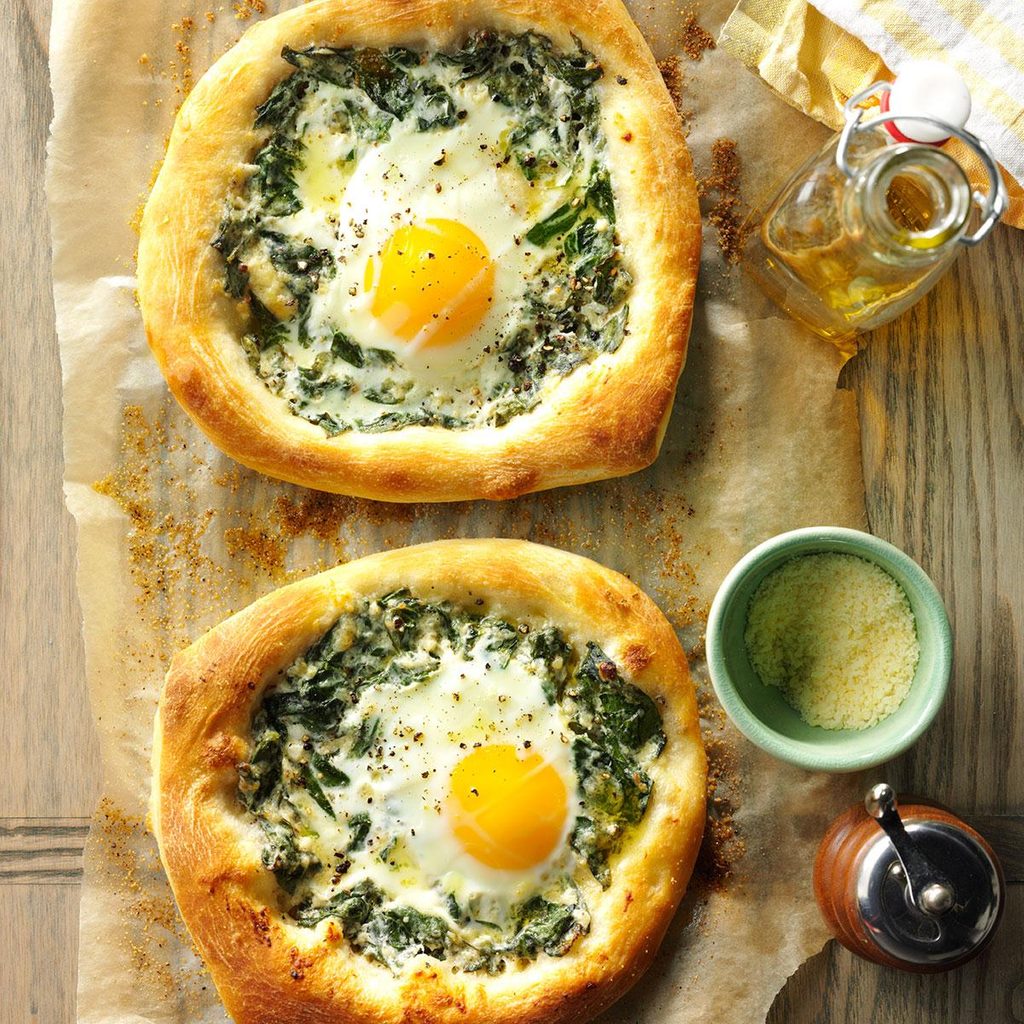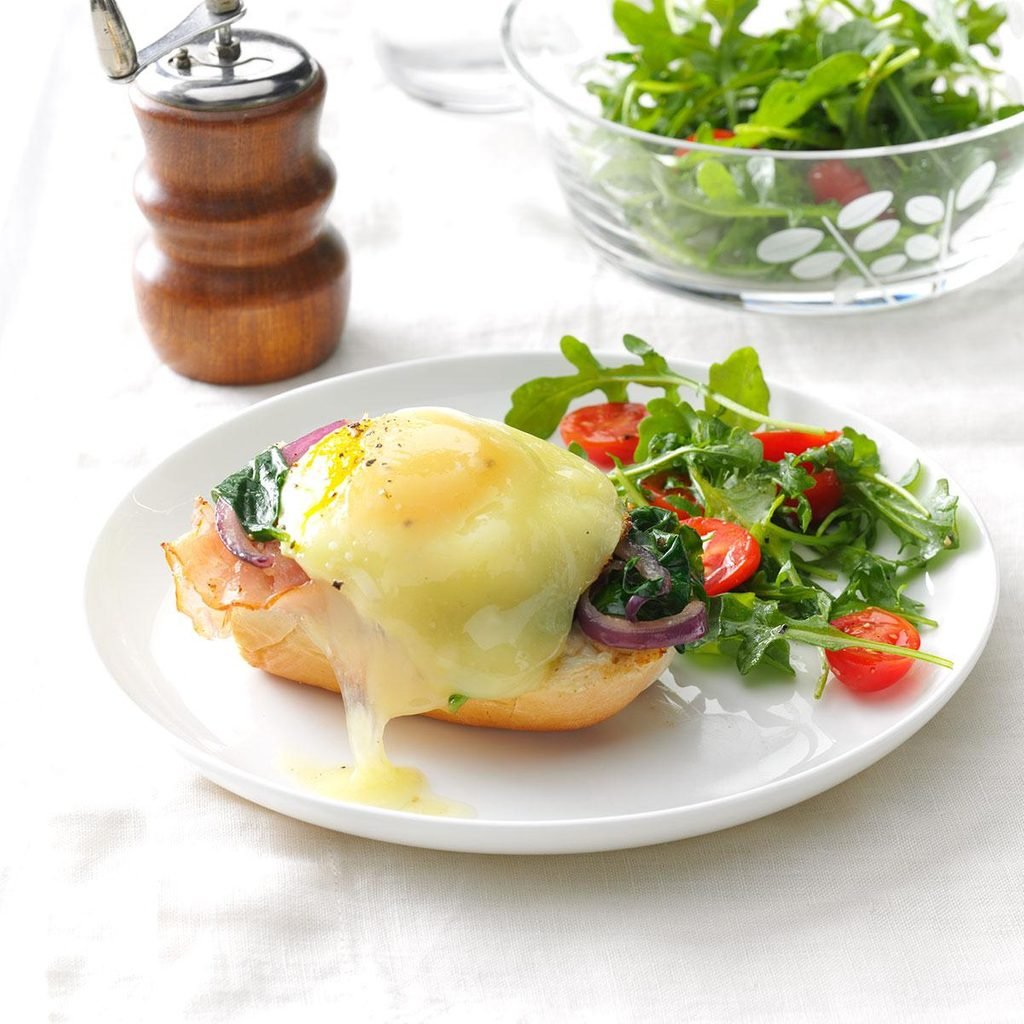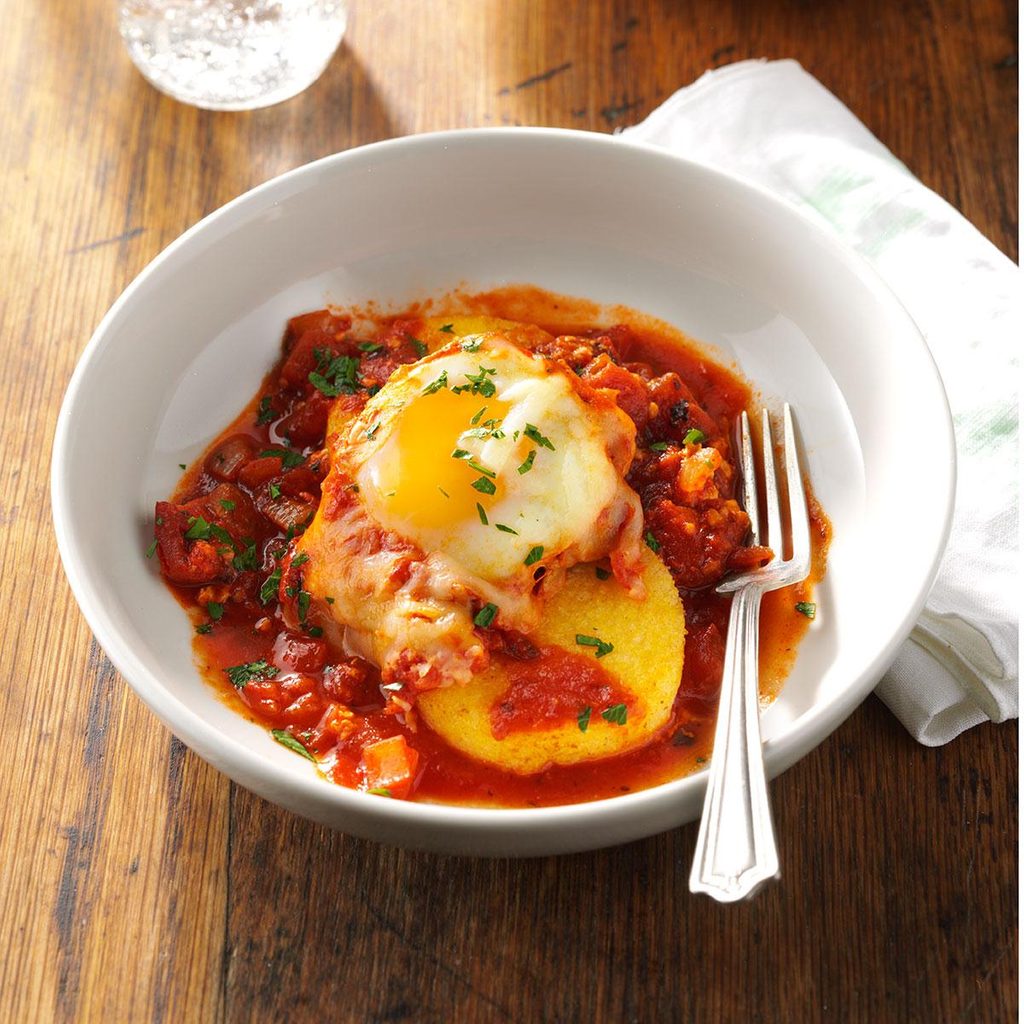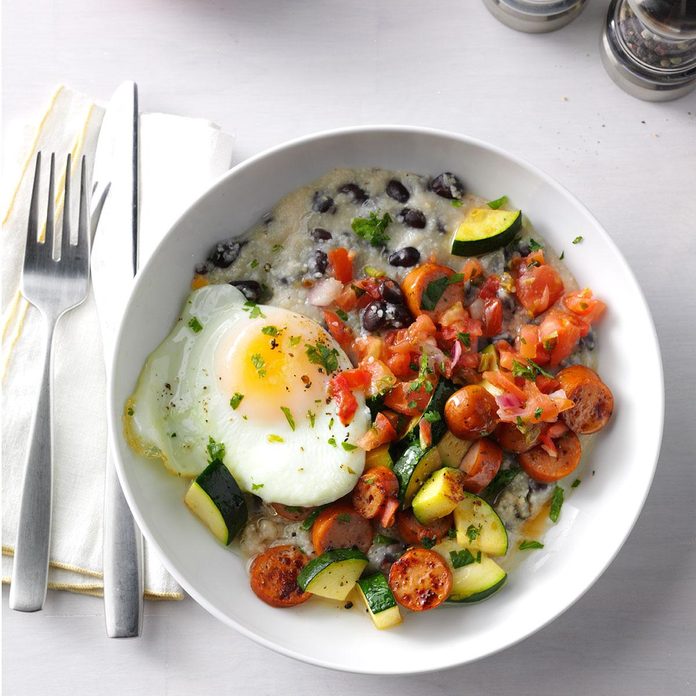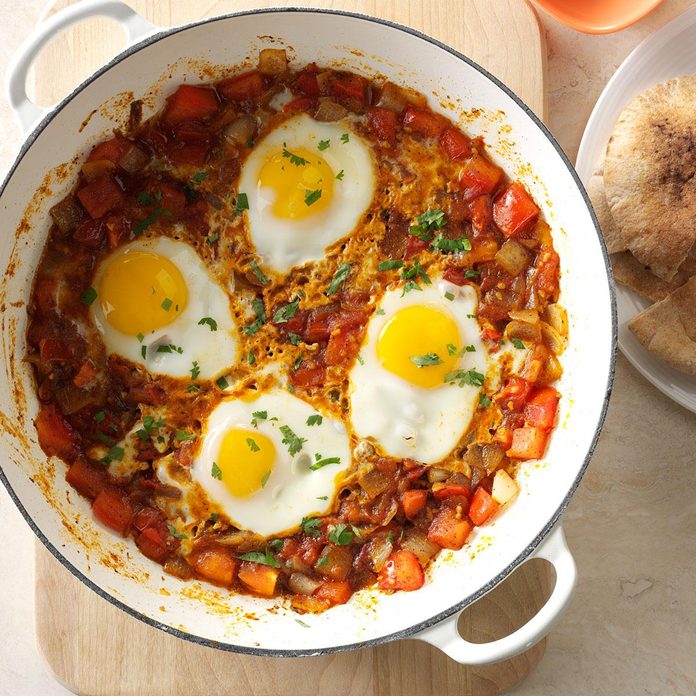How to Make Poached Eggs Perfectly Every Time
Updated: Jan. 24, 2024
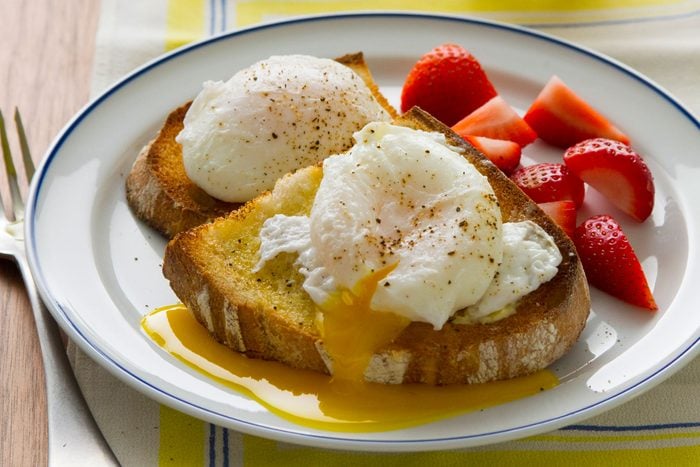
With this guide on how to make poached eggs, a picture perfect, runny yolk is never too far out of reach.
For those who love a good runny, golden yolk, poached eggs are the way to go. When cooked correctly, the egg takes the form of a delicate bubble atop your plate or English muffin (thinking of you, eggs Benedict fans). It’ll have firm whites on the outside and a fluid center. Pierce it with your fork and the yolk will ooze out in a delightful and totally delicious way. If poached eggs are something that you enjoy, you should explore Turkish eggs too.
So why don’t we poach eggs more often? The technique is a little fiddly, and it can take a few trial runs to master. To make matters worse, recipes often overcomplicate the method for poaching eggs, making them seem intimidating and extra fussy to make. Or, some cooks think that they need special equipment like silicone egg cups or egg poaching pans to make poached eggs. The truth is, all you need is a gentle touch and plenty of practice (although these egg tools are worth the drawer space!).
While you’re at it, find out how Gordon Ramsay makes the perfect poached egg.
Our expert Deputy Culinary Editor James Schend breaks down the steps on how to make poached eggs, so you can make them easily from home.
How to Make the Perfect Poached Egg, Step by Step
You’ll need:
- Large eggs, however many you’d like
- Saucepan or skillet with high sides
- Small teacups, bowls, or ramekins
- Water
- Slotted or perforated spoon
- Paper towels
- Plate
Test Kitchen Tip: Fresh eggs are the best for poaching because they tend to hold their shape. But if there’s no chicken coop in the backyard, no sweat! Follow this simple trick to test the freshness of your eggs. Don’t be afraid to test eggs for freshness even if they’re past their sell-by date.
Step 1: Get Your Water Ready
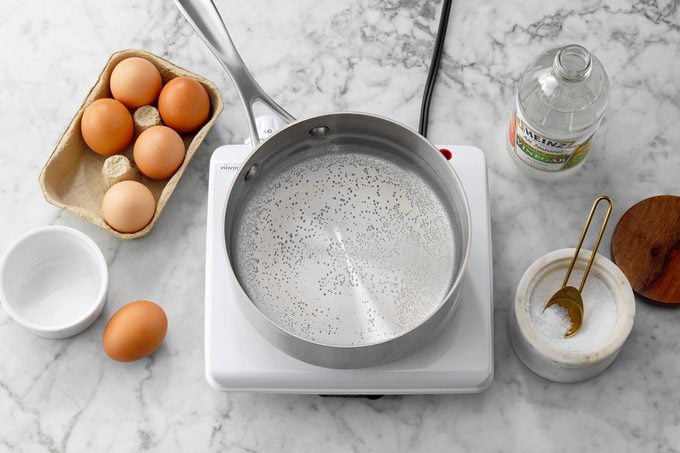
Place two to three inches of water in your saucepan or skillet. Turn the heat up; and bring the heat up to a boil. Add one to two teaspoons of white vinegar, as well as a teaspoon of kosher salt. Then, lower the heat to the point where bubbles gently spring up from the bottom of the pan. Remember that boiling water is too hot, and hot water is too cool—you want a very low simmer.
Keep checking to make sure the water doesn’t boil—once you get the eggs in the water, it’s best to keep the water as still as possible to keep your eggs intact.
Test Kitchen Tip: Use a wide, deep skillet, because our egg should have plenty of room while poaching. If you’re poaching multiple eggs at a time (experts only!), use a wide pot, such as a saute pan.
Step 2: Get Your Eggs Ready

Break cold eggs, one at a time, into small ramekins, teacups, measuring cups or small bowls. Have them ready near the stove. If you’re only poaching one egg at a time, you can also crack them as you go. It’s easy to do them all at once so you don’t have to keep washing your hands and dealing with eggshells over and over again.
Either way: Don’t crack the eggs directly into the water, because the less disturbed the egg is as you drop it into the water, the better. Make sure you’re avoiding these other mistakes you might be making with eggs.
Test Kitchen Tip: Using a teacup might be easier than using a ramekin. Why? Most teacups are flared out at the top of the cop, which makes it easy for the egg to slide out smoothly. Plus, the teacup’s handle is useful for tipping the egg into the simmering water.
Step 3: Poach
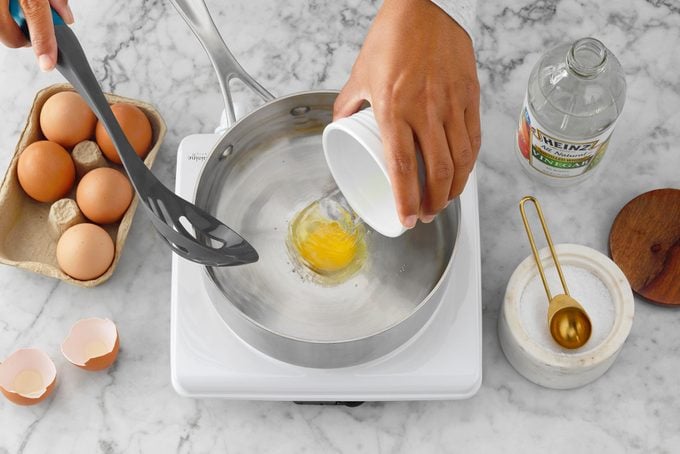
This is the moment of truth! Gently stir the just-bubbling water in a clockwise motion. Hold a ramekin or teacup over the water, as close as you comfortably can. Nice and easy, gently slip the egg into the water. Give it a few seconds to gather itself; the swirling water will help roll the egg, collecting the stray egg whites to itself.
If you’re relatively new to poaching, we suggest going one egg at a time. You’ll learn a lot from your first couple of eggs (which may look a little sloppy, but which will probably taste just fine). If you’re more comfortable poaching, slip all the eggs that can fit in the pan, making sure none are touching.
As with most things in life, perfection takes practice. So cut yourself some slack if an egg (or two) breaks in the water. Keep calm and poach on.
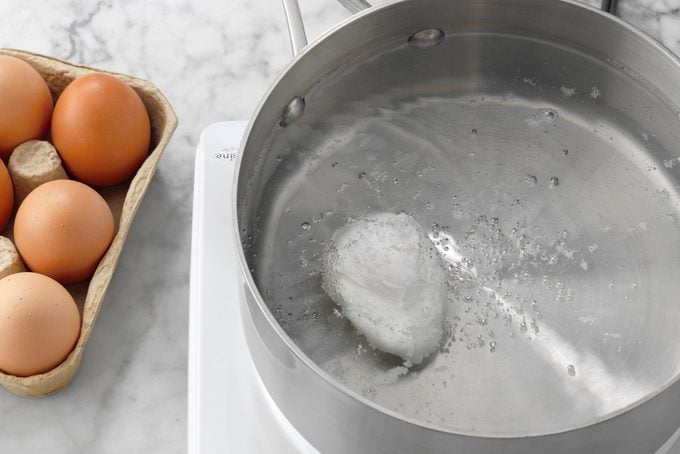
Cook, uncovered, three to five minutes or until whites are completely set and opaque, and the yolks begin to thicken but are not hard. Take care not to stir the water while they cook—you’ll only want to stir gently as you ease them into the water. When they’re cooked, lift the eggs out of the water with a slotted or perforated spoon. A slotted spoon works best for removing eggs from the water because they allow water to drain off, and also catch any pesky trailing bits of egg white.
Place the spoon with the poached egg on top to drain on paper towels instead of directly onto your benedict or avocado toast—because a damp, watery egg isn’t going to be very good! You can also use this time to remove any wispy tails with the edge of another spoon.
Enjoy immediately!
Tips for Poaching Eggs
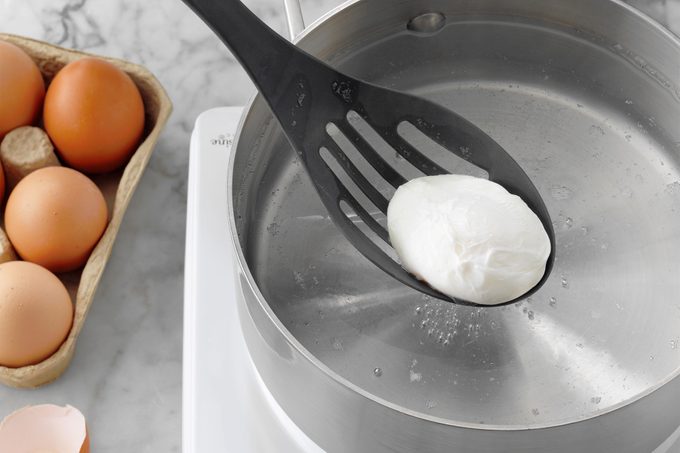
What other tools can I use to make poached eggs?
Some cooks like to use a fine-mesh sieve to make their poached eggs, which is supposed to help with getting rid of those pesky, wispy egg whites before you pour them into the simmering water. If you want to try this method, put the mesh sieve over a plate or bowl, and crack your egg into it. Gently swirl the sieve to loosen those wispy whites, pour the egg into the simmering water, and follow our directions as follows after that.
How long do poached eggs last?
Poached eggs don’t keep very well, so only plan on making what you’ll eat in one sitting. Now that you know how to make poached eggs, it’ll be easy to whip them up whenever you like!
Once you get the hang of this method, give the poached eggs in a muffin tin method a try.
What can I eat poached eggs with?
Enjoy your eggs plain on toast, as part of an Benedict or with a side of seasonal veggies. If you prefer your eggs boiled, learn how to boil eggs the traditional way or make Instant Pot hard-boiled eggs. Then, master how to cook an egg every way, from scrambling to frying to over easy.
Next: explore microwave poached eggs.


